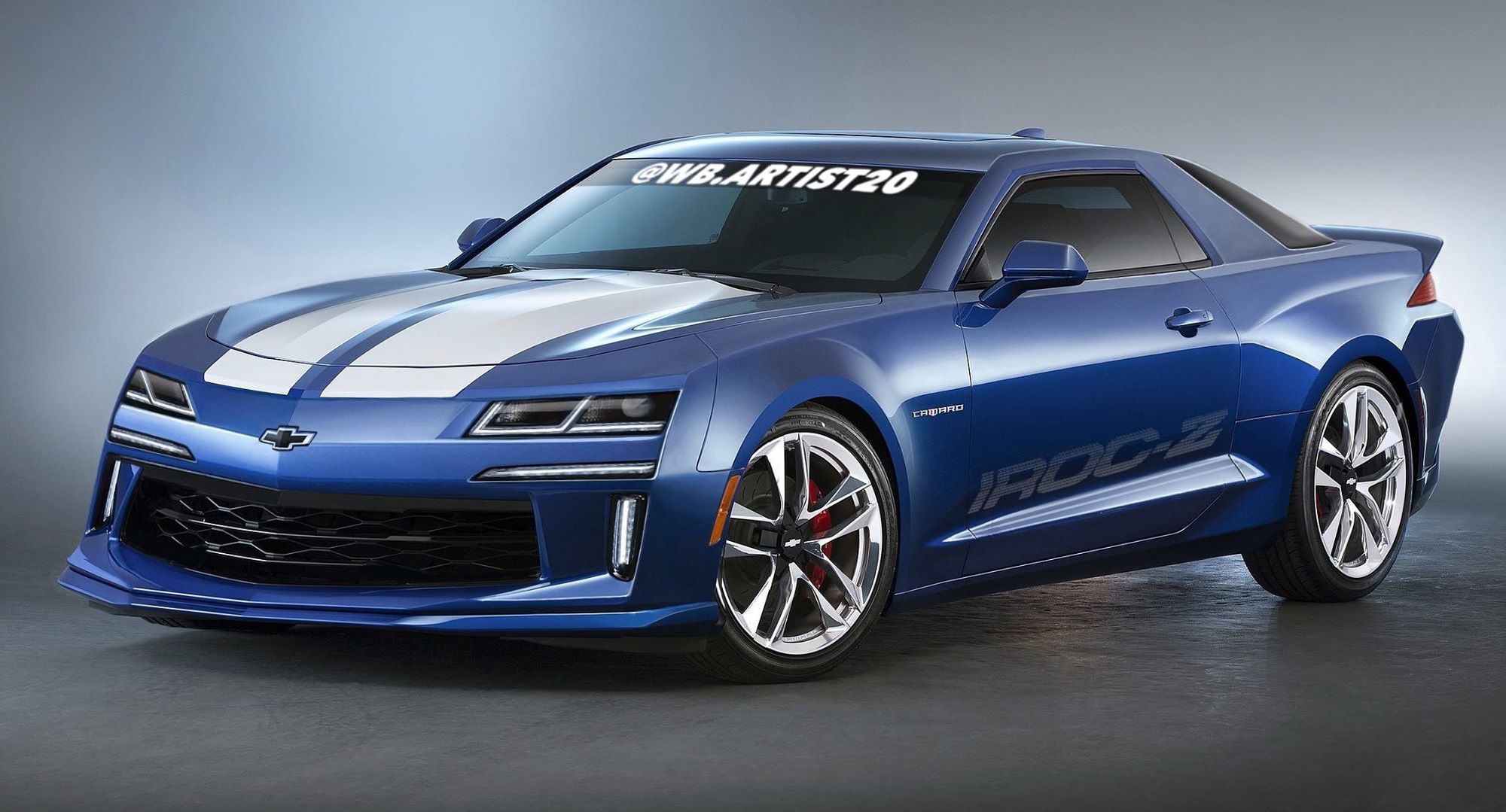The sixth-generation Chevrolet Camaro has been on the market for five years as of 2020, yet GM developed only a handful of special-edition models. On top of the SS, there's only the ZL1, as the Z28 nameplate was seemingly abandoned.
Ford, on the other hand, developed more than 10 variations of the sixth-gen Mustang, including revivals of the iconic GT350, GT500, Bullitt, and Mach 1. Chevrolet could definitely do better with a new-generation Z28, but, as this new rendering shows, a modern IROC-Z model is also a good option.
Instagram's wb.artist20 just rendered a modern variant of the iconic IROC-Z, but although it is based on the current-gen Camaro, it features extensive modifications that Chevy will never do. While the lower profile and the front bumper are clearly taken from the ongoing muscle car, the roof, the front fascia, and even the rear end are significantly different. That's because the artist modified them to match the looks of the original Camaro IROC-Z, based on the third-generation model.
So it sports a clean nose devoid of an upper grille, a pair of square headlamps at each corner, and thin LED strips just above the bumper. The roof also mimics the third-gen Camaro, with a thick B-pillar instead of a traditional quarter window and a tailgate-style rear window. The rear end was also modified to include a ducktail spoiler and taillights that extend into the rear fenders.
Fitted with a few unique features and a slightly more powerful V-8 engine, the IROC-Z would be a solid competitor for either the Mustang Bullitt or the Mach 1. We also need to remember that the original IROC-Z was an option package for the Z28, so maybe Chevy is working on both models as we speak.
Chevrolet Camaro IROC-Z history
The IROC-Z was introduced in 1985, four years after the third-generation Camaro went into production. Named after the International Race of Champions, an all-star racing series that was running since 1974, the IROC-Z was an option package for the Z28 that included visual and performance enhancements.
Upgrades included a sportier suspension, lowered ride height, and Bilstein shocks with a unique setup, as well as larger diameter sway bars and Goodyear Gatorback tires borrowed from the Corvette. It also came with its very own decal package that included wide stripes on the engine hood, thin two-tone stripes on the bumpers and side skirts, and "IROC-Z" lettering on the doors.
In its first year, the IROC-Z was available a 5.0-liter V-8 in three different outputs. The LG4 came with 155 horsepower, the L69 developed 190 horses, while the range-topping LB9 was rated at 215 horsepower. Output of the latter dropped to 190 horses in 1986. The IROC-Z remained in production until 1990 and Chevrolet made small updates for every model year. In its last year on the market, it was powered by a 5.7-liter V-8 rated at 245 horsepower. The nameplate never returned.

